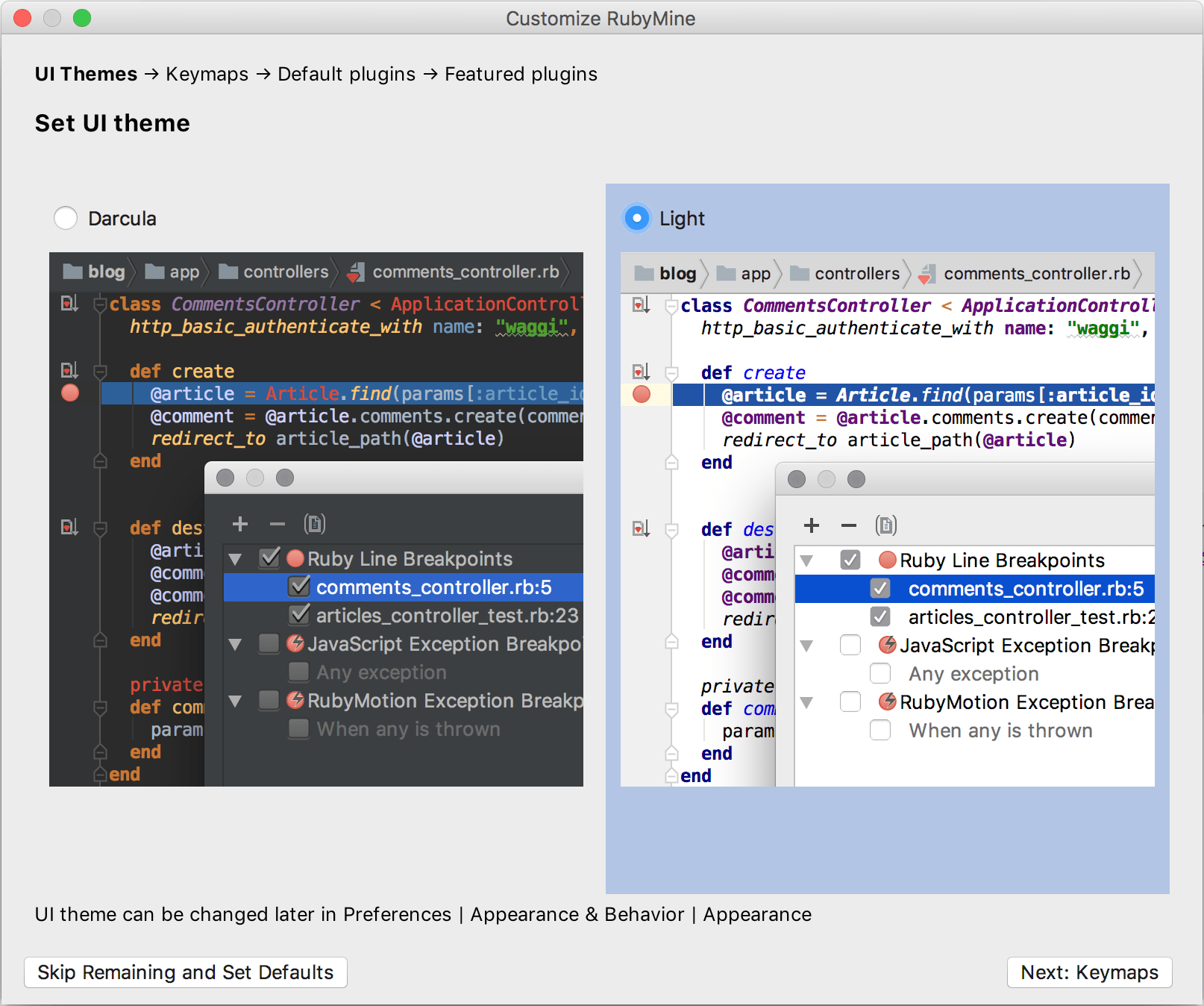

This template then takes the users input and runs the devise generator, with the user's answer from the last question being passed to this generator. If the user replies "y" or "yes" to this question, then the template will add Devise to the Gemfile outside of any group and then runs the devise:install generator.
#RUBYMINE THEMES INSTALL#
Then we pose a question to the user about whether or not they would like to install Devise. In the above template we specify that the application relies on the rspec-rails and cucumber-rails gem so these two will be added to the test group in the Gemfile.

#RUBYMINE THEMES PRO#
blank? generate "devise", model_name end Copy BashSupport Pro is a plugin for advanced Bash and shell script development debugger, test runner, code completion. Gem "rspec-rails", group: "test" gem "cucumber-rails", group: "test" if yes? ( "Would you like to install Devise?" ) gem "devise" generate "devise:install" model_name = ask ( "What would you like the user model to be called? " ) model_name = "user" if model_name. There are also other similar apps such as Vim, Arduino, and Robo 3T that also need to try if you want to find the best alternative of Node.js. Otherwise, MSYS2 and EmEditor also quite good as the alternative of this software. UPDATE: As of 2018.3, IDEA has its own high contrast theme. You can find more details about changes it makes in this document. Settings Appearance & Behavior Appearance Adjust colors for red-green vision deficiency. For detailed documentation see the Rails Application Templates guide. Appium, RubyMine, and WampServer is the strong competitor of Node.js. There is also an option in settings to turn on color-blind mode in settings. This is a brief overview of the Templates API.

#RUBYMINE THEMES GENERATOR#
Now that you've seen how generators can be used inside an application, did you know they can also be used to generate applications too? This kind of generator is referred to as a "template". $ bin/rails generate scaffold Comment body:textĬreate db/migrate/20130924143118_create_comments.rbĬreate app/controllers/comments_controller.rbĬreate test/controllers/comments_controller_test.rbĬreate app/views/comments/Ĭreate app/views/comments/įallbacks allow your generators to have a single responsibility, increasing code reuse and reducing the amount of duplication. We can achieve that by changing our configuration to the following: The next customization on the workflow will be to stop generating stylesheet and test fixture files for scaffolds altogether. Since each generator has a single responsibility, they are easy to reuse, avoiding code duplication. For instance, the scaffold generator invokes the scaffold_controller generator, which invokes erb, test_unit and helper generators. This allows us to add/replace/remove any of those invocations. The scaffold generator doesn't actually generate anything, it just invokes others to do the work. Looking at this output, it's easy to understand how generators work in Rails 3.0 and above. $ bin/rails generate scaffold User name:stringĬreate db/migrate/20130924151154_create_users.rbĬreate app/controllers/users_controller.rbĬreate test/controllers/users_controller_test.rbĬreate app/views/users/Ĭreate app/views/users/Ĭreate test/application_system_test_case.rb


 0 kommentar(er)
0 kommentar(er)
